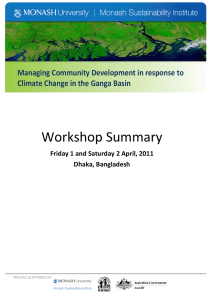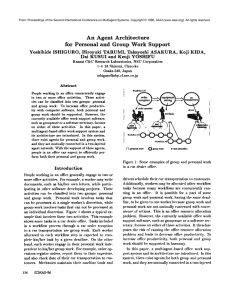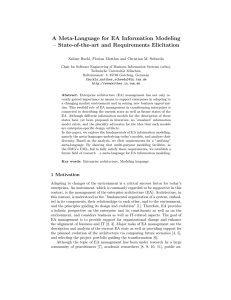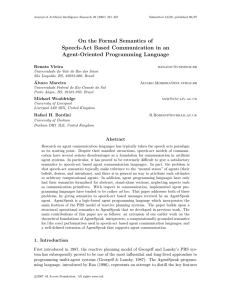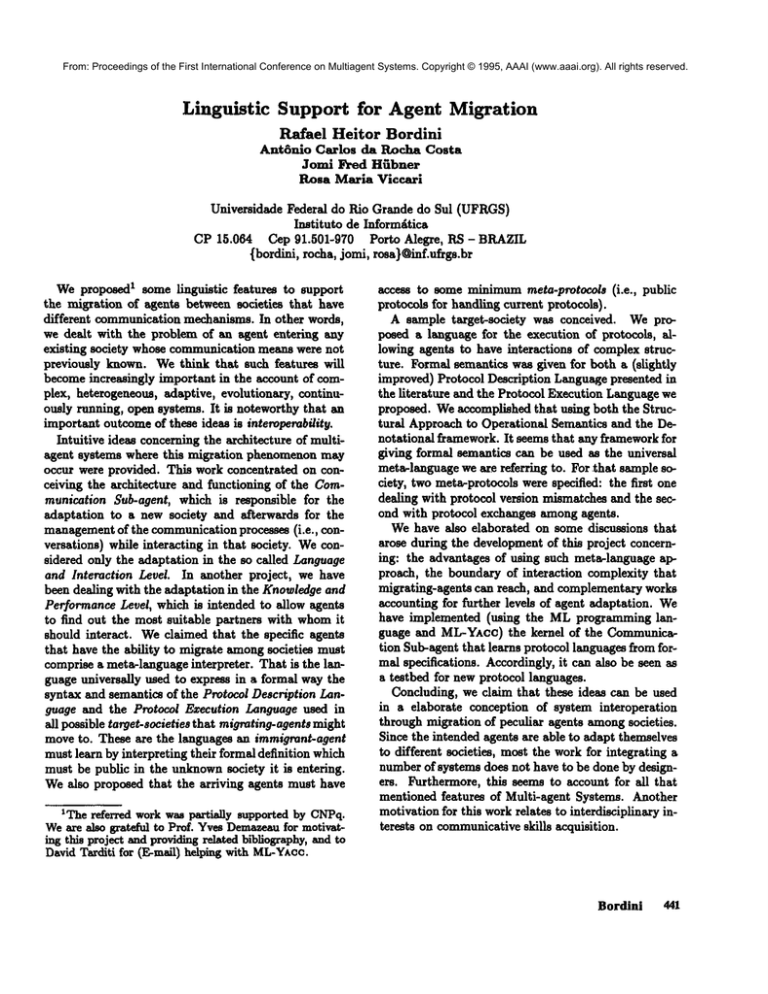
From: Proceedings of the First International Conference on Multiagent Systems. Copyright © 1995, AAAI (www.aaai.org). All rights reserved.
LinguisticSupport for Agent Migration
RafaelHeitorBordini
AntSnio
Carlos da Rocha Costa
Jomi Fred H~bner
Rosa Maria Viccari
Universidade
Federaldo Rio Grandsdo Sul (UFRGS)
Instituto
de Inform~tica
CP 15.064 Cep 91.501-970Porto Alegre,RS - BRAZIL
(bordini,
rocha,jomi,rosa}@inf.ufrgs.br
Weproposed I some linguistic features to support
the migration of agents between societies that have
different communication mechanisms. In other words,
we dealt with the problem of an agent entering any
existing society whose communication means were not
previously known. We think that such features will
become increasingly important in the account of complex, heterogeneous, adaptive, evolutionary, continuously running, open systems. It is noteworthy that an
important outcomeof these ideas is interoperability.
Intuitive ideas concerning the architecture of multiagent systems where this migration phenomenon may
occur were provided. This work concentrated on conceiving the architecture and functioning of the Communication Sub-agent, which is responsible for the
adaptation to a new society and afterwards for the
managementof the communication processes (i.e., conversations) while interacting in that society. Weconsidered only the adaptation in the so called Language
and Interaction Level. In another project, we have
been dealing with the adaptation in the Knowledge and
Performance Level, which is intended to allow agents
to find out the most suitable partners with whomit
should interact. Weclaimed that the specific agents
that have the ability to migrate amongsocieties must
comprise
a meta-language
interpreter.
Thatis thelanguageuniversally
usedto express
in a formalwaythe
syntaxandsemantics
of theProtocol
Description
Languageand the Protocol Execution Language used in
all possible target-societies that migrating-agents might
move to. These are the languages an immigrant-agent
must learn by interpreting their formal definition which
must be public in the unknownsociety it is entering.
Wealso proposed that the arriving agents must have
1The referred work was partially supported by CNPq.
Weare also grateful to Prof. Yves Demazeaufor motivating this project and providing rdated bibliography, and to
David Tarditi for (E-mail) helping with ML-YAcc.
access to some minimummeta-protocols (i.e., public
protocols for handling current protocols).
A sample target-society
was conceived. We proposed a language for the execution of protocols, allowing agents to have interactions of complex structure. Formal semantics was given for both a (slightly
improved) Protocol Description Language presented in
the literature and the Protocol Execution Language we
proposed. Weaccomplished that using both the Structural Approach to Operational Semantics and the Denotational framework. It seems that any framework for
giving formal semantics can be used as the universal
meta-language we are referring to. For that sample society, two meta-protocols were specified: the first one
dealing with protocol version mismatches and the second with protocol exchanges among agents.
Wehave also elaborated on some discussions that
arose during the development of this project concerning: the advantages of using such meta-language approach, the boundary of interaction complexity that
migrating-agents can reach, and complementary works
accounting for further levels of agent adaptation. We
have implemented (using the MLprogramming language and ML-YACC)the kernel of the Communication Sub-agent that learns protocol languages from formal specifications. Accordingly, it can also be seen as
a testbed for new protocol languages.
Concluding, we claim that these ideas can be used
in a elaborate conception of system interoperation
through migration of peculiar agents amongsocieties.
Since the intended agents axe able to adapt themselves
to different societies, most the work for integrating a
number of systems does not have to be done by designera. Furthermore, this seems to account for all that
mentioned features of Multi-agent Systems. Another
motivation for this work relates to interdisciplinary interests on communicativeskills acquisition.
Bordini
441


